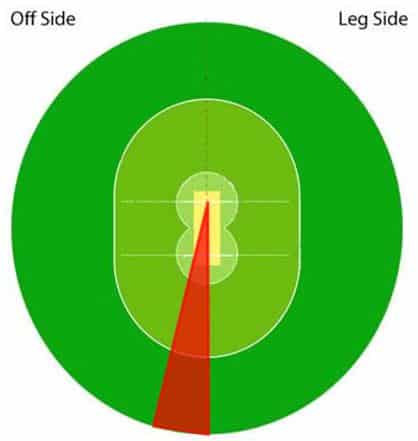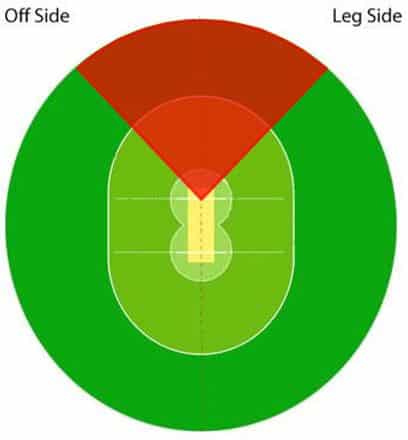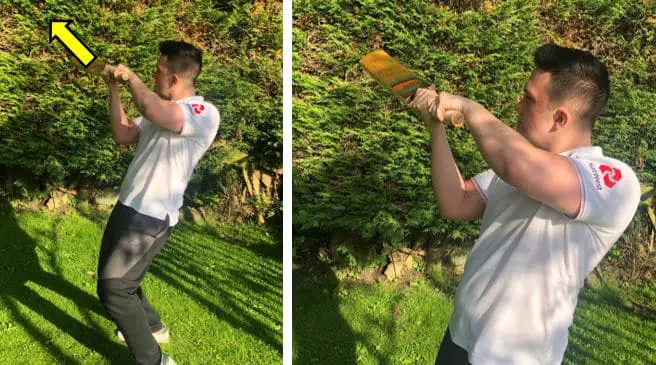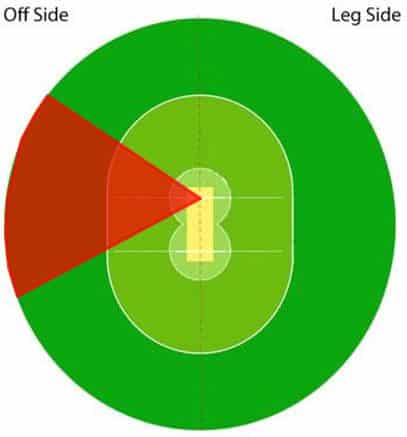Cricket is a game that is very easy on the eye, and there are a whole bunch of different shots that can be very pleasing to watch. Once you’ve been watching cricket for a while, you’ll instinctively know a good shot when you see one. Sometimes, you know a shot is great because of the way the ball flies to the boundary. Sometimes it’s about the body position of the batsman and how they ‘hold the pose’. Sometimes, it’s about the sound the ball makes as it rockets off the face of the bat!
There are some cricket shots that fans of the game rate slightly higher than others, and in this post I’ll be giving you my views on what the best cricket shot is. I’ll also cover a few other shots which are personal favourites of mine for different reasons! For each shot, I’ll explain why they are so loved by spectators, and I’ll also tell you how to play them! Let’s begin…
So, what is the best cricket shot?
According to most cricketers, the best cricket shot is the straight drive. The straight drive is widely regarded as one of the most aesthetically pleasing shots in the sport due to how the batsman presents the full face of the bat towards the bowler and hits the ball directly back past them. The shot also signals a batsman’s dominance over the bowler.
When watching cricket on TV, you’ll often hear commentators say that a batsman who is playing the straight drive well is a batsman who is in good form and is in full control of their technique – and I definitely believe this to be true. To play the straight drive a batsman needs to display excellent hand-eye co-ordination, solid footwork, and great balance combined with timing. It’s not an easy shot to get right, but it’s always guaranteed to raise some applause from spectators!
As you can see from the picture below, the straight drive is a front foot shot that is played to full deliveries. The reward for playing the straight drive is that once you beat the bowler, the fielding side is unlikely to have a fielder down the ground that can cut off the ball before it reaches the boundary. One of the risks of playing the straight drive is that if you miss the ball, there’s a high chance you could be out bowled or LBW. Additionally, if the ball is swinging, it could move away from you at the last second leading to you getting an outside edge on the ball!
Although the straight drive is my personal choice for the best shot in cricket, there are many other fans of the game that may think differently! There are plenty of other classic shots, and some more innovative shots that some people prefer. Here are a few of those:
- The ramp shot
- The uppercut
- The switch hit
- The square cut
In the rest of this post we’ll go through each shot I’ve mentioned above individually. I’ll give you some tips on how to play each of them, and I’ll also let you know which areas of the ground they target, and which types of deliveries they should be used against!
The Straight Drive
Where To Hit The Straight Drive
As I mentioned earlier, the straight drive is hit down the ground directly back past the bowler. Some batsmen like to hit the shot in the air in order to give the mid-on and mid-off fielders no chance of cutting off the shot. However, a well timed straight drive that is hit along the ground should beat these two fielders comfortably. The diagram below shows where the shot is hit!

When Should You Play The Straight Drive?
The straight drive is best played when the batsman receives a good to full length delivery that is on a middle stump/off stump line. It can also be played to deliveries that are slightly outside the off stump, depending on where the batsman is standing.
How To Play The Straight Drive
If you want to learn how to play the straight drive, follow these steps:
- Get into your normal batting stance and prepare to receive the ball
- Watch the ball as it travels down the pitch towards you. By watching the ball closely, you will be able to judge the line and length of the ball quickly. Once you notice that the ball is full and angled in towards the off stump/middle stump, you can begin moving your front foot forwards to where the ball will pitch. Make sure your front foot doesn’t move too far across to the off side, because if it does then you will have to play around your front pad with your bat – thus putting yourself at higher risk of an LBW.
- Once your front foot is planted, bend your front knee slightly and move your head over your front knee. This ensures that your weight is angled forwards and helps you to keep the ball on the ground. At the end of step 3, you should be in a position similar to the one I’m demonstrating below.
- When you’re in the position shown above, bring the bat down to meet the ball in a nice arc. Make sure that the face of the bat is pointing directly down the ground, in the direction that you want to hit the ball.
- While you play the shot, make sure you keep your bottom hand nice and loose on the bat, and keep your front elbow nice and high. This allows you to hit the ball smoothly down the ground.
The Ramp Shot
Where To Hit The Ramp Shot
The ramp shot is an incredibly innovative cricket shot that has become one of the most iconic sights in cricket in the last decade.
The ramp shot is hit behind square on both sides of the wicket, usually between the third man and fine leg fielding positions. The diagram below should show you the exact areas that it targets!

When Should You Play The Ramp Shot?
The ramp shot is mainly played against fast bowlers. This is because when a fast bowler delivers the ball, the ball will be travelling towards the batsman with plenty of pace. The batsman can then simply use the bat to deflect the ball to the boundary. The pace at which the ball flies off the bat is generated by the pace the bowler originally applied to the ball.
The ramp shot is great for when you’re desperately looking for a boundary. It’s especially effective when the fielding team doesn’t have any fielders on the boundary behind square on either side of the wicket. For example, if the fielding team has a fine leg fielder inside the circle trying to stop a single, the ramp shot can be used to direct the ball over the head of that fielder.
As for which types of deliveries you should play the ramp shot to, you can play it against any balls that are of a good length or fuller. It also makes it easier if the delivery isn’t extremely wide. So, for example, a good length delivery that is on the line of the stumps is perfect for playing the ramp.
How To Play The Ramp Shot
To learn how to play a great ramp shot, follow these steps:
- First, you should get into your batting stance and prepare to receive the ball as normal
- Once you’re in your batting stance, keep your eyes on the bowler as they are approaching the crease. Just before they deliver the ball, take a step across to the off side with your back foot so that you’re covering your stumps. As you make this move to the off side with your back foot, turn your body so that your chest is facing directly towards the bowler.
- Once you’re facing the bowler, adjust your grip on the bat slightly so that the face of the bat is pointing upwards towards the sky. At the end of this step you should be in a position like the one I’m showing below!
- Now that you’re in position, all you need to do is quickly read the line and length of the delivery. Once you’ve picked up where the ball is heading, use the face of your bat to deflect the ball behind square on either the off side or the leg side. The vast majority of ramp shots will be hit towards the fine leg area, as this is the easiest place to direct the ball. However, some like to hit the ball towards third man too! If you’re a right handed batsman targeting fine leg, you should be trying to deflect the ball over your left shoulder. Left handed batsmen hitting towards fine leg will be trying to deflect the ball over their right shoulder.
- As the ball hits your bat, you should lean away slightly from the direction you’re trying to hit the ball. This is to ensure that you don’t hit the ball towards your own body.
- Remember that when playing this shot you really don’t have to hit the ball forcefully. As I’ve already mentioned, the idea is to use the pace already applied to the ball by the fast bowler and simply guide the ball with the face of your bat. If you really feel like you need a bit of extra power behind the shot, flex your wrists slightly as the ball makes contact with the bat. This may help you hit the ball that little bit further and avoid a fielder!

The Uppercut
Where To Hit The Uppercut
The uppercut is a shot that is intended to be hit in the air behind square on the off side of the field. This zone is shown in the diagram below!

When Should You Play The Uppercut?
The uppercut is an attacking shot that is mostly used by aggressive batsmen against fast bowlers. It was popularised by iconic Indian players like Sachin Tendulkar and Virender Sehwag, both of whom used it to score boat loads of runs!
The uppercut is usually played to short balls or back of a length balls (click here if you’re not sure what back of a length means) that are a good distance outside the line of the off stump. To play the uppercut, the batsman needs a bit of room to free their arms and extend the bat to make contact with the ball. If the ball is angled in towards the body, it makes the uppercut almost impossible to play.
There are two types of field placings that may cause you a problem when playing this shot. The first of these is slip and gully fielders. Slip and gully fielders stand close to the wicket keeper, waiting for a catch resulting from an outside edge. So, if slip and gully fielders are the only fielders in place behind square on the off side, it should be a relatively simple task to play the uppercut and get the ball over their heads.
The second field placing that may cause you a problem is any fielder positioned on the boundary behind square on the off side. This field placing is often referred to as third man, but sometimes ‘fly slip’ is used also. If the fielding team has a fielder positioned on the boundary in this area, you’ll have to be very careful when playing the uppercut. You’ll have to quickly decide whether you want to go over their heads and hit the ball for six, or get a nice soft contact on the ball so that it lands short of them and doesn’t offer a catch. Personally, I like to stay away from the uppercut shot if there is a man on the boundary, unless you’re in desperate need of quick runs!
How To Play The Uppercut
To play the uppercut effectively, follow these steps:
- First, you should get into your batting stance and prepare to receive the ball as you normally would
- The second step is to watch the bowler carefully as they approach the crease, and then keep your eyes on the ball as it is released from their hand.
- As I’ve already mentioned above, you should be waiting for a short, slightly wide ball in order to play the uppercut. So, once you notice the ball has landed in the correct place, keep your eye on the ball and let it continue its path towards your upper body.
- To play the shot, arch your back slightly and hold your bat up like I’m demonstrating in the photo below. The aim with the uppercut is to use the pace that is already on the ball and use the bat to guide it towards the boundary. I love this shot because it allows you to really watch the ball all the way on to the bat. You should be making contact with the ball just as it goes past you.
- Like with the ramp shot, you really don’t have to try to hit the uppercut hard in order to get the ball to the boundary. However, if you want to inject an extra bit of pace to make sure the ball goes over the head of a fielder, I’d recommend flexing your wrists slightly as the ball makes contact with the surface of the bat.

The Switch Hit
Where To Hit The Switch Hit
The switch hit is probably the most unconventional shot that I’m going to cover in this post today. It was popularised by legendary England batsman Kevin Pietersen in the mid 2000’s, after he famously used it against Muttiah Muralitharan! Before I tell you the specific area of the field that the switch hit targets, there’s something about the shot that I need to explain.
The ‘switch hit’ gets its name because the batsman switches their stance before they receive the ball. So, a right handed batsman who plays the switch hit will adopt the stance of a left handed batsman when they play the shot. A left handed batsman playing the switch hit will change to a right handed stance. When a batsman flips their stance in this way, the off side and the leg side flip too! If you’re confused, the diagram below should explain what I mean.
So, when I say that the switch hit is used to target the off side, I mean the off side when the batsman was in their original stance. The diagrams below show the specific area on a cricket field that both left and right handers will aim for when playing the switch hit.
When Should You Play The Switch Hit?
The switch hit is a ‘pre-meditated’ shot which is mainly played against spin bowlers. ‘Pre-meditated’ means that the batsman will decide to play the shot before the bowler has delivered the ball. This means that the switch hit is not played to any type of delivery in particular. However, if you’re going to play the switch hit, the ball you would ideally want to receive is one that lands on a good length and on the line of the stumps.
Most professional batsmen will choose to play the shot based on the fielding positions that the bowling team has in place. Often, spin bowlers will pack the leg side with fielders and bowl in a way that makes it incredibly hard for batsmen to hit the ball through the much less protected off side. The switch hit allows a batsman to take the leg side fielders out of the game and hit the ball through the off side, where there are only a couple of fielders. This makes the shot incredibly effective, as not only does it provide a good run scoring option, it also forces the bowler and the fielding captain to re-think their approach.
How To Play The Switch Hit
To play the switch hit, follow these steps:
- First, you should get into your batting stance and prepare to receive the ball like normal
- The second step is the key to playing the switch hit. Just as the bowler is about to delivery the ball, you need to quickly switch your stance to the opposite side. So a right handed batsman should switch their foot position so that they’re standing like a left handed batsman, and vice versa. Your grip on the bat should also change. What was your top hand previously should now become your bottom hand, with your bottom hand now gripping the top of the bat. The main thing is to execute this switch of stance quickly so that you are completely still as the ball leaves the bowlers hand.
- Once you have switched your stance, you should be still and ready to receive the ball once again. If the ball you receive is on a good length and is hittable, you should move your front foot forward, collapse your back leg and play a sweep shot or a slog sweep, targeting between mid wicket and backward point.
- If the ball does not land in an area that you feel is hittable, play a defensive shot or leave the ball alone.
This is a shot that you’ll have to devote a lot of practice time to if you want to get it right and be able to play it consistently well. Trust me, flipping your stance and playing with the opposite hand is not a comfortable experience the first time you try it! The more you repeat the motion in the nets and the more you hit the ball from this position, the more prepared you will be to play the same shot during a match. If you’d like to watch a video of Kevin Pietersen playing the switch hit, I’d recommend checking out the one below!
The Square Cut
Where To Hit The Square Cut
The square cut is hit square of the wicket on the off side of the field. It is usually hit either in front of or behind the point fielder (click here if you’re not sure where the point fielder is located). The diagram below shows the area that batsmen should be targeting when playing the square cut.

When Should You Play The Square Cut?
The square cut is an attacking shot that is widely used in all forms of cricket. One of my favourite users of the square cut over the years has been England’s Alastair Cook, who used it to put many opening bowlers to the sword during his time opening the innings.
The perfect time to play the square cut is when you receive a delivery that is back of a length or slightly shorter. The line of the delivery should be wide of the off stump – just wide enough that the batsman has room to free their arms and extend the bat out to meet the ball!
How To Play The Square Cut
To play the square cut, follow these steps:
- First, get into your normal batting stance and prepare yourself to receive the ball
- As the bowler is approaching the crease, keep your eyes focused on them. Once they reach the crease and propel the ball towards you, keep your eyes on the ball in order to see where it is going to land.
- To play the square cut, the ball first needs to land in that short of a length area just wide of the off stump. As soon as you notice this happen, move your weight backwards slightly so that it is centred over your back foot, and strike the ball with a horizontal bat once it reaches you.
- If you want the ball to go behind square on the off side, try to wait for the ball a little bit longer and play it later. If you want the ball to go in front of square, try to play it slightly earlier.

When we see a wide delivery that is short of a length, its easy to just throw our hands at the ball and forget about controlling the shot. But, when the fielding team has a point or backward point fielder in place, they will be waiting to catch any balls that we hit in their direction. So, when practicing the square cut you may also want to focus on standing tall and hitting the ball down into the ground, rather than hitting it aerially! Aerial cut shots are necessary sometimes, but trust me, there’s nothing more frustrating than hitting a square cut right out of the middle of your bat and straight into the hands of a fielder!
Conclusion
I hope you enjoyed hearing my thoughts on what the best shots in cricket are! If there are any other shots that you’re interested in hearing about, then you can read about them in one of my other posts by clicking here. There are also plenty more technical tips on my batting tips page, so if that’s the sort of thing you’re looking for feel free to head over to that page. Cheers!
